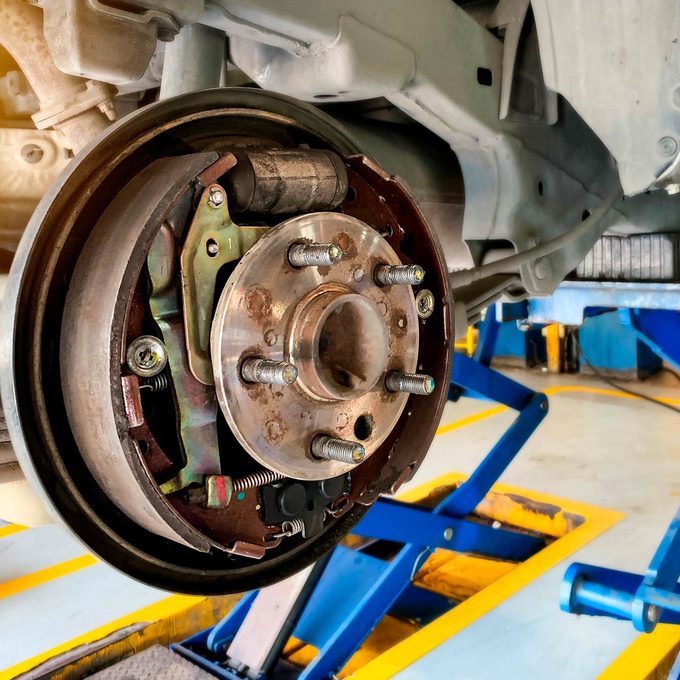how to change drum brakes
A drum brake system, including the drum, brake shoes, and brake cylinder is explained, with guidelines for maintenance and inspection.
 Attapon Thana/Shutterstock
Attapon Thana/Shutterstock
Drum brakes were the standard method of stopping a car until disc brakes began to supplant them a few decades ago. Disc brakes have more braking force and therefore are regarded as safer. Today, drum brakes are still found on many new cars, usually economy models and almost exclusively on the rear wheels. Equipped with disc brakes, front wheels do most of the hard work in day-to-day braking.
How Do Drum Brakes Work?
When you press the brake pedal, pneumatic brake fluid is squeezed through the brake lines under pressure and into the brake cylinder. This forces a pair of springs in the cylinder against a piston at each end of the cylinder. Each piston is driven against one of the two long, curved brake shoes, forcing each shoe against the drum—a drum-shaped housing that is coupled to the wheel via the lug nuts. The shoe consists of a metal backing and a friction-material pad that contacts the drum and causes the wheel to slow and stop.
Here's how to replace your front brake pads in four hours.
What are the Benefits of Drum Brakes?
The main reason drum brakes are still in use today is that they are cheaper to make, and they weigh slightly less than disc brakes. But, they also create more heat than disc brakes and lose more stopping power in poor/wet driving conditions. Other pluses for the drum brake include:
- The friction pads have more surface area and last longer than the brake pads on caliper-operated disc brakes.
- Drum brakes, unlike disc brakes, have a "self-energizing" ability that takes advantage of geometry to boost stopping power without increasing braking pressure.
- The friction material layer on a worn brake shoe can be replaced to allow for re-manufacturing of the part.
Here's how to save money on a good professional brake job.
Drum Brake Maintenance
The drum housing for your drum brakes is designed to last 150,000 to 200,000 miles under normal conditions before the friction of braking causes its inside diameter to increase enough to affect contact with the shoes. The shoes themselves typically can go around 40,000 miles before they wear out and need replacement. Other than replacing worn parts and making sure you have an adequate amount of brake fluid, little additional maintenance is required.
Checking brake fluid is important and very easy. Here's how.
See how simple it is to replace brake fluid.
How Do I Know if it is Time to Replace Brake Shoes?
You can do a visual inspection of the friction material on your brake shoes through the rivet holes in the shoe body. If the shoes are not at least 2 or 3 millimeters thick, they should be replaced. TIP: Always replace shoes in pairs to prevent pulling when you brake. Other indicators are squeaking and squealing if a worn pad is making metal-to-metal contact with the drum. And, because the parking brake is linked to the rear drum brakes, you can also test the brakes by parking your car in neutral on a hill, applying the parking brake, and confirming that the car does not roll.
Here are the most common car problems and how to fix them yourself.
Next, learn how a diesel engine works.
how to change drum brakes
Source: https://www.familyhandyman.com/article/drum-brakes/
Posted by: whitespenth.blogspot.com

0 Response to "how to change drum brakes"
Post a Comment